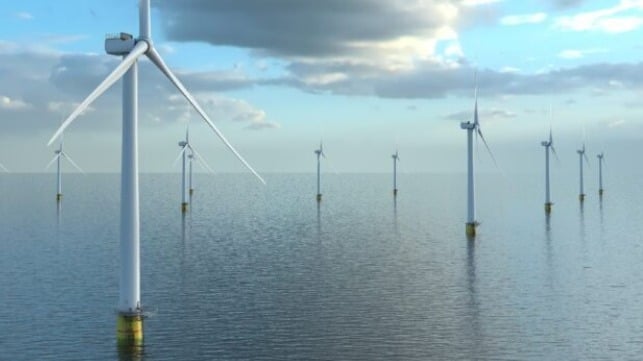Interior Department Cancels Wind Project Meetings Following Trump’s Order

The first demonstration of the new Trump administration’s efforts to derail the offshore wind energy sector emerged as the Department of Interior began reversing steps taken in the last days of the Biden administration. The Bureau of Ocean Energy Management canceled meetings for the review of an offshore wind project while the Department of the Interior highlighted that it was taking “steps to streamline processes that will enhance efficiency and innovation.”
BOEM announced it was canceling the virtual public meetings scheduled by the Biden administration to begin comments and review of the Construction and Operations Plan submitted by Vineyard Mid-Atlantic. The first meeting had been scheduled for February 6, followed by sessions on February 11 and 19 for comments on the plan. It, however, noted that written comments could still be submitted before the March 3 deadline.
The prior administration on January 14 launched the review process for the wind farm that would be developed by Copenhagen Infrastructure Partners and be located approximately 20 miles offshore New York and 36 miles offshore New Jersey. The lease was awarded in 2022 as part of the auction for the New York Bight and the construction plan called for 2 GW of electricity from up to 117 wind turbines, enough to power more than 700,000 homes.
The Department of the Interior and BOEM said in announcing the cancellation that it is implementing President Trump’s memorandum temporarily halting offshore wind leasing on the Outer Continental Shelf. The memorandum also pauses new or renewed approvals, rights-of-way, permits, leases, or loans for offshore wind projects pending a review of federal wind leasing and permitting practices.
The new Secretary of the Interior, Doug Burgum, however during his first day in the position on February 3, signed measures to “immediately identify all emergency and legal authorities available to facilitate the identification, permitting, leasing, development, production, transportation, refining, distribution, exporting and generation of domestic energy resources and critical minerals,” and to “expedite the authorization” of key projects. Burgum said there would be an emphasis on deregulation and unlocking resources in Alaska following Trump’s directions.
Despite the new policies and move away from offshore wind energy, two projects highlighted that they are continuing to move forward. Equinor today, February 5, announced its year-end financial results and detailed its outlook including a continued commitment to the Empire Wind project. It completed the financing for the 800 MW project at the end of 2024 and highlights a low cost of entry as well as the utilization of project financing which along with future tax credits will cover the remaining CAPEX for Empire Wind. At the right time, it will also bring in a partner for the project which is due to be completed by 2027.
The commitment to Empire Wind comes as the company reported it is “high-grading its portfolio, reducing the investment outlook for renewables and low carbon solutions, and improving cost across the organization” as part of an effort to improve returns and free cash flow generation. Equinor said it was proceeding with Empire Wind, “a project in a challenging market with returns under pressure and uncertainty,” while reiterating that it will continue to deliver above 10 percent equity return on its current and renewable assets in operations.
Similarly, Dominion Energy highlighted its continued commitment and progress for its Coastal Virginia Offshore Wind project. It reported yesterday that the installation has reached the halfway mark and that the offshore work remains on budget and on time. Due for completion at the end of 2026, the project with 176 wind turbines and a capacity of 2.6 GW, is slated to be the largest offshore wind farm in the United States.
Dominion holds rights for two other offshore wind projects in the mid-Atlantic region while Equinor has another one in New England and one in the mid-Atlantic. Those are listed as longer-term prospects, and likely to be delayed by the new Trump policies.
